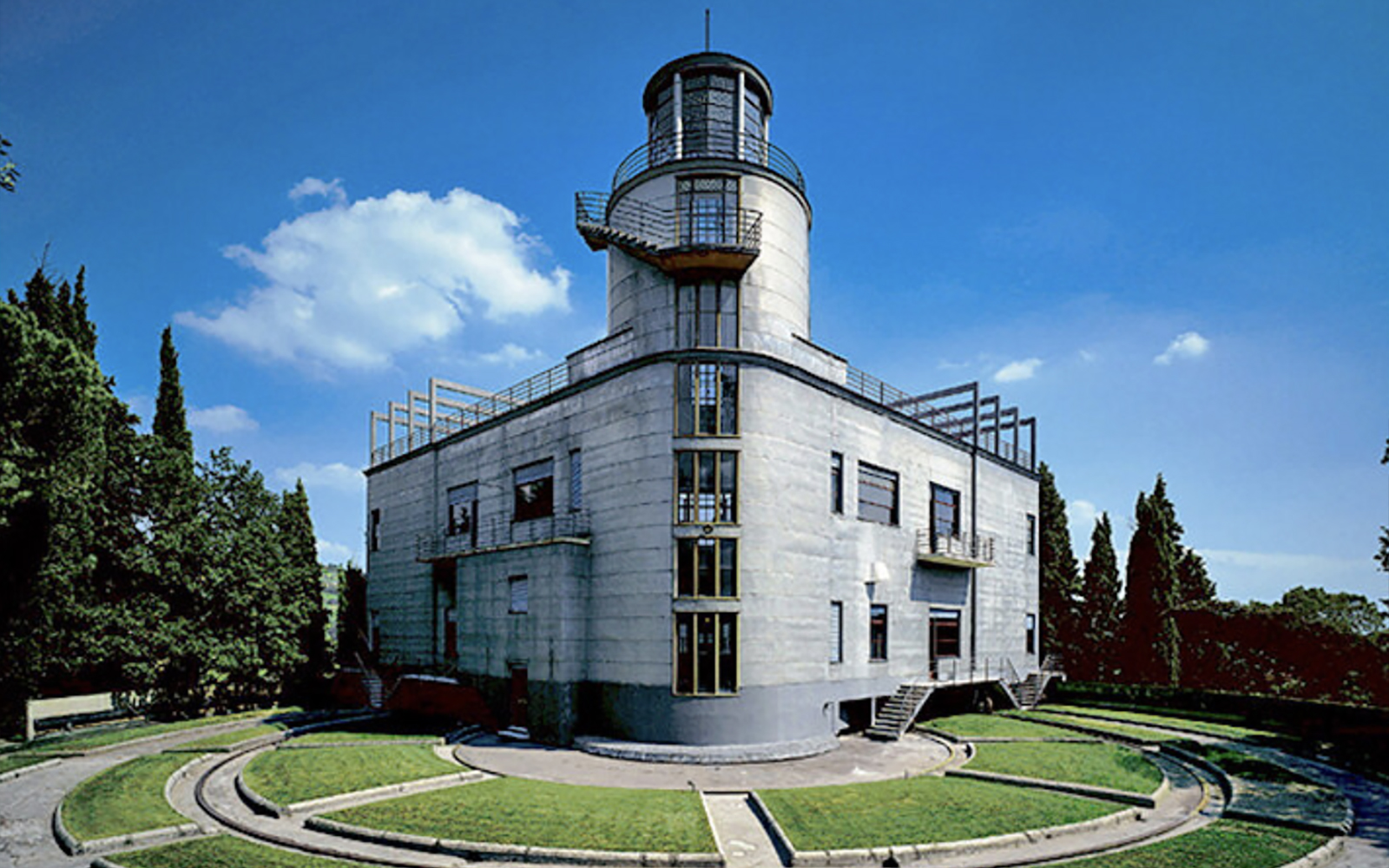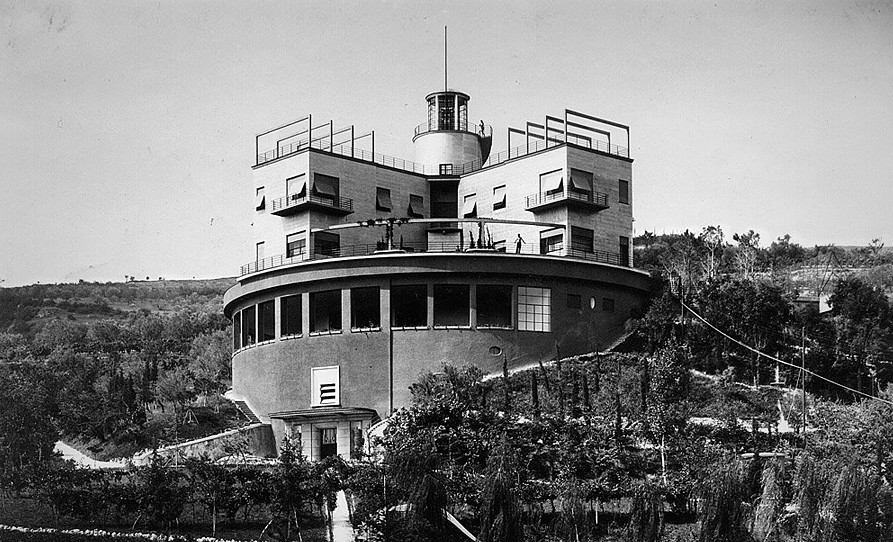Villa Girasole
Architects: Angelo Invernizzi a.o.
Year of completion: 1935
Location: Marcellise, Italy
On the radar
Latest update 8 July 2025

Villa Girasole
The Villa Girasole is a house built in the 1930s in Marcellise, northern Italy, near Verona. The concept of architect Angelo Invernizzi, Il Girasole, turns to follow the sun as it moves, just like a sunflower opens and turns to follow the sun. The future of Villa Girasole is a concern to the Invernizzi family and Iconic Houses Foundation. As of today (8 July 2025) the building can be visited by appointment for a tour.
14 April 2020, Andrea Canziani, Secretary General of DOCOMOMO Italia gave us this update: 'The status of Villa Girasole is uncertain and unclear. Fondazione Cariverona, who is controlling the Fondazione Angelo e Lidia Invernizzi, is not doing anything for the conservation. The Villa is closed. Some of the land plots around the park have been sold, and the same has happened with the ancient farmhouse that was part of the property of Invernizzi. There is a lawsuit between the two new owners for using the park of the Girasole and the money left by Lidia Invernizzi that should be used for the villa is frozen. The board of directors resigned in 2017. The furniture is apparently in a warehouse of the bank.'
Latest News
Domus, 4 July 2025
What is Villa Girasole: a visionary Italian house that rotates to follow the sun

Architect
Angelo Invernizzi, a wealthy Italian engineer of Genoa, Italy, dreamed of building a house that would “maximize the health properties of the sun by rotating to follow it”. He designed the house for himself with the help of Romolo Carapacchi, a mechanical engineer; Fausto Saccorotti, an interior decorator; and Ettore Fagiuoli, an architect. Invernizzi’s daughter, Lidia Invernizzi, described in the 17-minute film “Il girasole: una casa vicino a Verona” by Marcel Meili and Christoph Schaub, Invernizzi could have built the house himself, but he instead invited many people to participate in its creation: painters, sculptors, furniture makers, and more. “People who believed in a new era: nothing should be built as before.” Having a family connection to Marcellise, even though working and living in Genoa, he wanted to build the house there in its hilly splendour and with its memories of a simpler life.
Villa Girasole, Angelo Invernizzi a.o, Marcellise 1929-1935 – Mirko Sgaravato.
History and Construction
Invernizzi first began drawing designs for his rotating house in 1929, but construction started in 1931, only during summer months. Invernizzi and his team used the project as a means to experiment with new materials, like concrete and fibre cement. “In keeping with the project's experimental nature, a considerable amount of adaptation and refinement accompanied construction”. They ended up using aluminium sheeting to replace the concrete on the outside walls because the concrete had left cracks. At first, Invernizzi only expected the house to make a 180-degree turn, but eventually after he saw it make the 180-degree turn, he “decided to make the complete turn” of 360 degrees. The project was complete in 1935, after four years.
Il Girasole Trailer. Una Casa Vicino a Verone. Short film by Cristoph Schaub.
Interior/Exterior
Il Girasole has two storeys and is shaped like the letter ‘L.’ It sits on an over 44 metre circular base, with a 42-metre-tall tower at the centre. This is where the house rotates from, using motors. The ‘L’ rotates “over three circular tracks where 15 trolleys can slide the 5,000 cubic metres building at a speed of 4 mm per second and it takes 9 hours and 20 minutes to rotate fully”. There is a manual control panel located in the moving part of the house that is used to control its rotation. The first floor of the moving part is known as the “day zone,” and includes the dining room, the music room, Mr. and Mrs. Invernizzi’s studies, with the kitchen, pantry, and toilet located right near the central tower. An assortment of bedrooms and bathrooms are found on the second floor. Villa Girasole’s interior design is such that one experiences a number of different progressions of light throughout the day: “Though the views from either wing differ at any given moment, they share a general orientation to the sun, reducing the chance for conflict over which direction the house should point. All rooms could share an equal amount of daylight or shade”.
Machinery
Villa Girasole runs on two diesel fuel motors which move the house over circular tracks and allow trolleys to slide the house along. It has been suggested that because the front of the house faces the sun all day, installing solar panels on the roof would be beneficial: gaining and storing energy for those times when the sun is not out.
Source: Wikipedia
Literature

A case study about the concrete coservation of the Villa Girasole is included in this book.
Concrete: Case Studies in Conservation Practice
Edited by Catherine Croft and Susan Macdonald with Gail Ostergren
Getty Conservation Institute
2019
Buy the book
Villa Girasole
Angelo Invernizzi a.o.
1935, Italy
